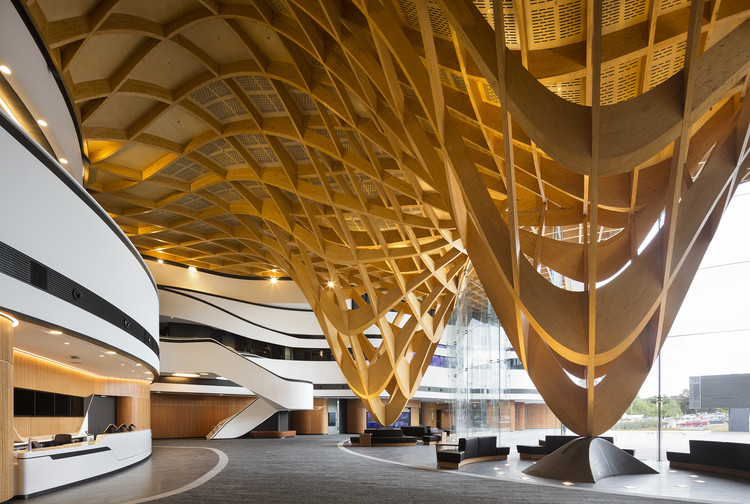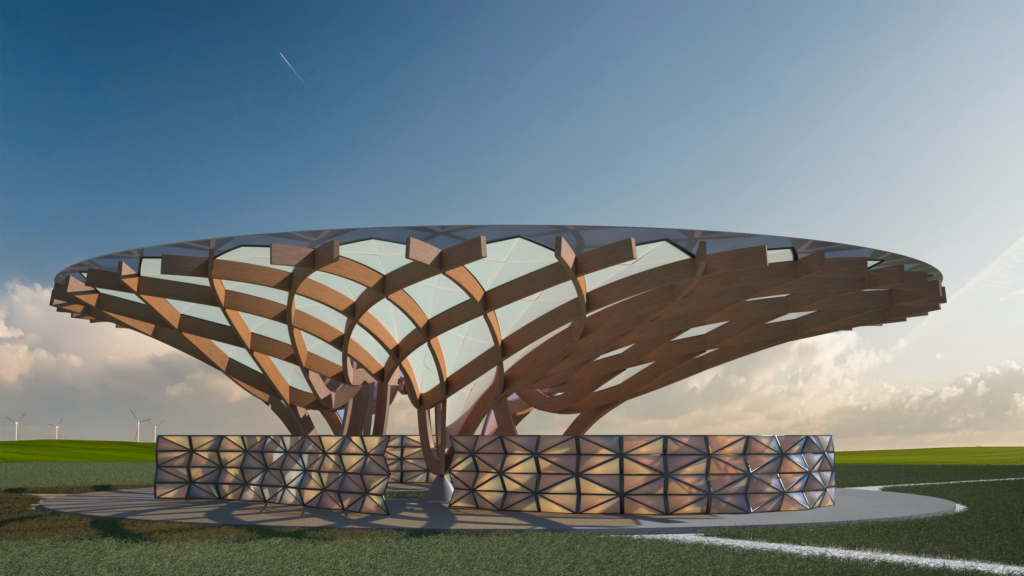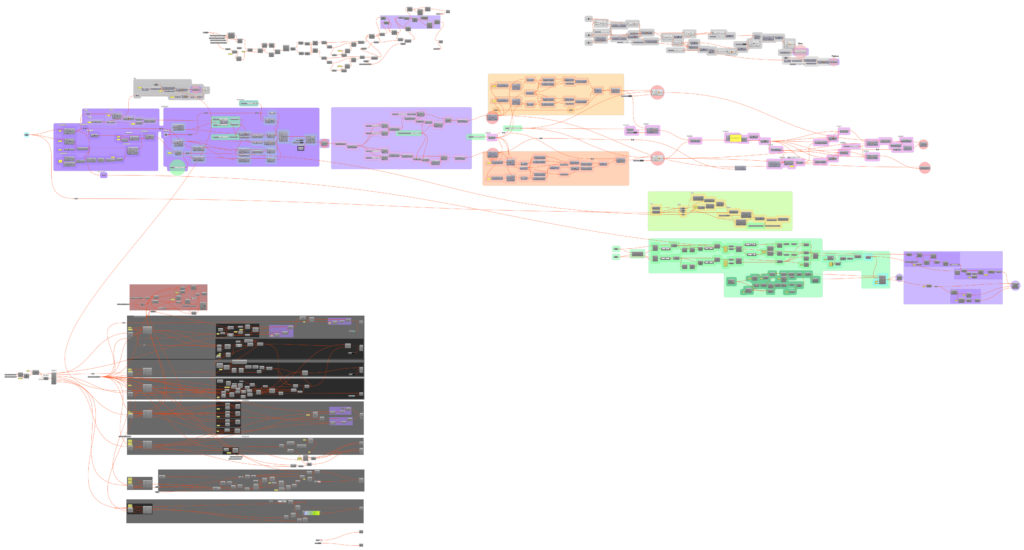ABSTRACT.
This project aims to rethink the Serpentine Pavilion, designed by Francis Kére. The approach used in this design was to study possible kinetic properties that could be applied to the 2017 project, while maintaining its general shape and layout. The original pavilion takes wide advantage of local solar, wind and rain characteristics, this proposal attempts to introduce mobile elements to the design as a means to further explore the flexibility of the pavilion as well as expanding on the underlying tree concept. Each member of the group was responsible for an elemente of the design, roofing, structure and envelope.

2017 SERPENTINE PAVILION
The 17th edition for the Serpentine Pavilion was designed by the 2022 Pritzker winner Diébédo Francis Kéré, from Burkina Faso. The design seeks inspiration in the tree that serves as a meeting point in the architect’s home village of Gando.

The Pavilion can be broken down into 4 main components. The roofing, which is tanslucent, a steel treliced structure that acts as a cannopy which also supports a wooden shading element. On the ground floor the walls are composed of wooden triangular blocks arranged into modules, between these there is a slight opening that allows for passage of air and light interactions. The main conceptual guide for the design is the central opening, which representes a focal point for the user / community as well as a funnel for water collecion.

https://www.kerearchitecture.com/
DESIGN INSPIRATION
As a source of inspiration for the re-design of the Pavilion, the Bunjil Place Project, by FJMT was chosen. A multicultural center in Narre Warren, Australia. It´s curved wooden structure provides an interesting form that could be applied to the serpentine pavillion. And a possibility to apply the same waffle logic onto a radial disposition. This logic can then be used as a guide for the shading elements, occupying the Spaces in between beams.

REDESIGN
Concept
The project follows the same basic structure and distribution of the original pavilion, maintaining the original spaces and layout. However, individually the elements are different. For the structure a waffle double spiral is used. Above it, the roofing is composed of mobile panels that open and close according to the sun orientation, that panel’s frames follow the structure outline. The walls are composed of foldable elements, allowing for greater open spaces within the pavilion.






PSEUDO CODE
Full code

Structure


Roofing


Envelope



ANIMATION


